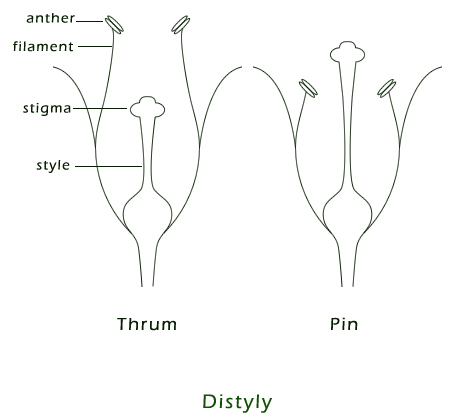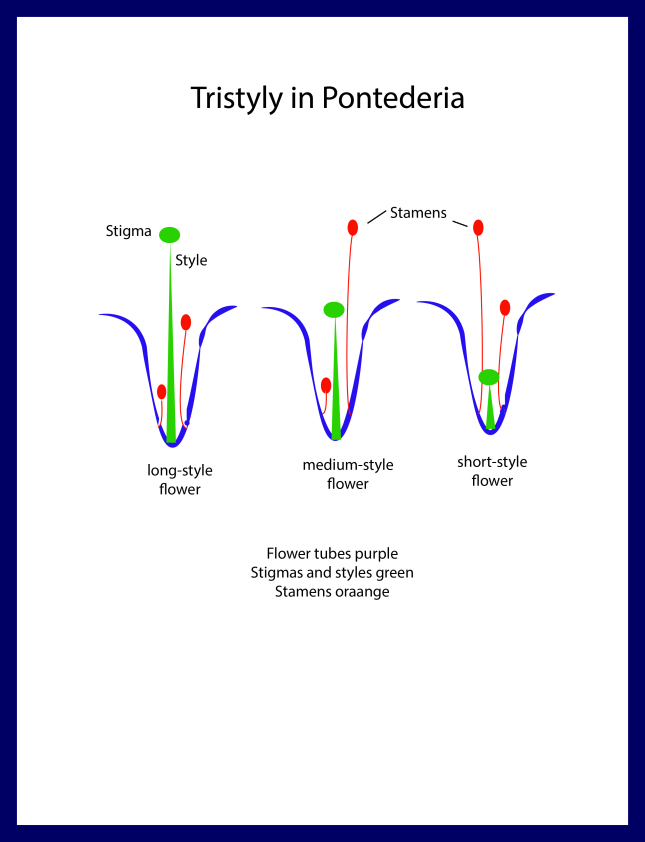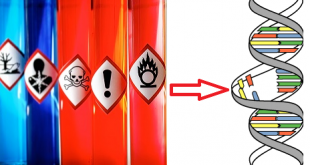Definition

C: Wikipedia public domain
Self-incompatibility is the inability of a pollen to fertilize the stigma of a same flower or the other flower of the same plant. It is a general name for several genetic mechanisms in angiosperms, which prevent self-fertilization and encourage outcrossing.
- Koelreuter 1st reported SI (Self incompatibility) in Verbascum phoeniceum plants.
- SI is reported in about 70 families of angiosperm including several crop species.
Good to know
- Incompatibility is the failure to obtain fertilization and seed formation after pollination.
- Pollen tube either fails to initiate or get matured fully.
- Recognition of “self” pollen is based on genes for self-incompatibility, called S-genes, with as many as 50 different alleles in a single population.
Types of self- incompatibility
Lewis (1954) has suggested various classifications of self-incompatibility. According to him, SI is mainly 2 types:
1. Heteromorphic self -incompatibility
2. Homomorphic self-incompatibility
Heteromorphic system
In this system, flowers are different in morphology. That means the anthers and stigmas are found at different levels within the flower.
It does not have much importance in crop improvement.
The genes responsible for self-incompatibility in heterostylous (different style lengths) flowers are strongly linked to the genes responsible for flower’s genetic polymorphism, that’s why these traits are inherited together.
Heterostyly: Two (distyly) or three (tristyly) style morphs differ in the reciprocal placement of anthers and stigmas.
This incompatibility is of two types:
1. Distyly
Both stamens and styles are of two different heights. It is two types:
* Thrum flower:
The flower with short style and high stamen is called as thrum type.
* Pin flower :
The flower with long style and short stamen is called as pin flower.

2. Tristyly:
It is the condition in which three different style lengths and corresponding stamen lengths are found in the same species. The flowers are short styled, intermediate styled, and long styled.
E.g. Tristyly in Pontederia.

Homomorphic system
- Gametophytic self incompatibility
2. Sporophytic self incompatibility
Gametophytic self incompatibility
This is governed by genotype of pollen or simply haploid genotype. It occurs due to the interaction between the pollen tube and style which is determined by the single S allele in the haploid pollen grain.
- Stigma is wet.
- It was 1st reported by East and Mangeldorf in 1925 in tobacco.
Sure to help forward:
- Pollen is haploid. So, it contains a single allele (e.g. S1).
- Stigma is diploid. So, it contains double allele (e.g. S1S2)
The pollen tube growth will be arrested if and only if for a haploid pollen, the stigma contains the same allele of that pollen. The stigma will also contain another allele. But that isn’t a concern here.
So, summarily speaking, the haploid genotype (allele) of pollen will search if any allele in the stigma is same as its own. If they are same, no pollen tube forms from that pollen.
Let’s understand by an example:
Let the genotype of pollen mother plant is S1S2.
1st case: Both pollens S1 and S2 are inhibited in an S1S2 style (follow the figure).
2nd case: S2 pollen will grow successfully through the S1S3 style. But S1 will not.
3rd case: Pollen grains from an S1S2 plant on an S3S4 pistil, the pollen tubes of both genotypes grow through the style.
Two different mechanism of gametophytic self- incompatibility have been described in detail at the molecular level and their description follows:
1. The RNAase mechanism
According to this mechanism, the pollen tube elongation is halted when it has proceeded approximately one third of the way through the style.
The female component ribonuclease, termed s-RNase probably causes degradation of ribosomal RNA inside the pollen tube , in the case of identical male and female s alleles, and consequently pollen tube elongation is arrested and the pollen grain dies.
2. S locus specific glycoprotein
According to this, S allele-specific proteins are produced by the stigma; most likely the S locus encodes for more than one protein product.
In Brassica campestris, S allele specific proteins seemed to be produced at the time of stigma maturation, and they were most likely glycoproteins.
The S allele specific glycoprotein shows extensive polymorphism and they show an exact correlation with S genotype.
But more recent studies suggest that the glycoproteins are produced during pistil development and their levels increase gradually.
This seems to be the case both in the sporophytic (Brassica) and gametophytic (Nicotiana alata) systems.
In the gametophytic system, glycoproteins appear to be confined to the style and stigma, i.e., the path taken by the pollen tube.
Sporophytic self-incompatibility
Outcome of the interaction between the pollen tube and the style is determined by the genotype of the sporophyte (diploid plant body). (That is, both alleles of the stigma function together.)
Understand this: Any pollen from an S1S2 plant can not fertilize an S1_ or S2_ plant.
- Stigma is pappilate and dry.
- S locus products are synthesized before completion of meiosis.
- Growth of the pollen tube arrests at the surface of the stigma.
Let’s understand by an example:
Let the pollen parent genotype is S1S2.
1st case: S1 and S2 pollen germination is arrested at the stigma surface with allele S1S2.
2nd case: S1 and S2 pollen germination is arrested at the stigma surface with allele S1S3.
3rd case: Where there is no match (S3S4), the pollen may germinate and grow through the style to the embryo sac.
So if for a single pollen, any of the stigma allele matches with that of the pollen, it will not give permission to germinate any pollen tube from that pollen and others also. Follow the figure below, to justify your understanding.

Reasons of self incompatibility
Researchers are unraveling the molecular mechanisms that are involved in SI.
- Genetic causes: Due to some genetic barrier.
- Herkogamy/Dichogamy
Herkogamy: It is the spatial separation of male and female reproductive organs within hermaphrodite flowers. E.g. in Calotropis.

Dichogamy: Anthers and stigma of a bisexual flowers mature at different times.
- Protogyny: Gynoecium matures earlier than the formation of anthers. E.g in Bajra.
- Protandry: Anthers mature earlier than the formation of gynoecium. E.g in cotton, Marygold etc.


Heterostyly: Styles and filaments are of different lengths resulting in cross pollination, e.g. in Linseed (studied above).
How to overcome self-incompatibility
There are many methods to overcome self incompatibility-
Bud pollination: It is the most successful method to overcome self incompatibility.
Irradiation: X-ray irradiation of flower buds at pollen mother cell stage helps to overcome self-incompatibility.Actually irradiation damages the physiological mechanism of self incompatibility in the style.
Surgical method: Removal of stigmatic surface /whole or part of the stigma or style to remove self incompatibility.
High temperature: Around 60 degree Celcius temperature is needed to remove self incompatibility.
In Vitro pollination: This method is caused by removing the stigmatic ,stylar and ovary wall tissues are directly dusted with pollen grains and then cultured in a suitable nutrient medium that supported both the germination of pollen and the development of fertilized ovules.
Mixed pollination: This is achieved by pollinating the stigma with a mixture of chemically or irradiatedly treated compatible pollen,and live incompatible pollen.So recognition pollen may also supply growth substances to cause germination of incompatible pollen and this process helps to remove self incompatibility.
Application of chemicals: Treatment of pistil with different chemicals including growth hormone have been recorded to be effective in overcoming self incompatibility.E.g the treatment of Brassica oleracea stigma with hexane before pollination was found to be effective in fruit set.
Grafting: Grafting of a branch onto another branch of the same plant or of another plant is reported to reduce the degree of self incompatibility in Trifolium pratense.
Importance of self incompatibility
- Self incompatibility may be used in hybrid seed production.
2. It is necessary to cross-compatible varieties to ensure fruitfulness.
3. It effectively prevents self pollination, as a result a profound effect on plant breeding approaches.
4. Increases of genetic exchange.
5. Continued selfing leads to a depression in self incompatibility.
Limitations of self incompatibility
Self-incompatibility has some limitations to use.
- It is very difficult to produce homozygous inbreed lines in a self compatible plants by hand pollination.
2. Artificial induction is difficult.
3. If the self incompatibility lines are difficult to maintain, hybrid seeds would be expensive.
4. Environmental factors overcome self incompatibility.
Read about cross-incompatibility.
References & Other Links
- B.D.Singh.Plant breeding:Principles and Methods.New Delhi.
- Class lectures of Rita Sarah Borna, Assistant professor, University of Dhaka.
Written by
Lipa Mondal, B.S. (Hons), Department of Botany, University of Dhaka
Best safe and secure cloud storage with password protection
Get Envato Elements, Prime Video, Hotstar and Netflix For Free
 Plantlet The Blogging Platform of Department of Botany, University of Dhaka
Plantlet The Blogging Platform of Department of Botany, University of Dhaka




